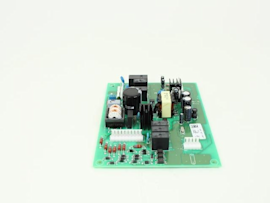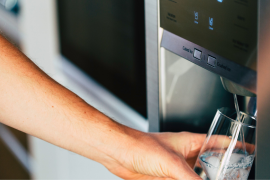How to diagnose a faulty refrigerator water inlet valve


That ice-cold drink on a hot summer day might not be possible if it weren't for that great little ice maker in your refrigerator. When that ice maker stops working, you may be tempted to call a service technician. Before you pick up the phone, there are a few things you can check to make sure the ice maker actually is broken.
Water not reaching the ice cube tray could indicate a problem with the water inlet valve, but not always. The water line from the water valve to the ice maker can freeze, not letting water into the ice maker. A clogged water filter could also cause low or no water flow to the ice maker or the water dispenser. Once it's determined that neither of these are the problem, you should check the water valve.
Where to find the fridge water inlet valve
To check the refrigerator water valve, unplug the power cord and shut off the water supply to the refrigerator. Most foods will be okay if left in the refrigerator as long as the doors are closed; power will be off for only about 30 minutes when checking the valve. Wear work gloves to protect your hands. Access the water valve, usually found at the bottom rear of the refrigerator. The fridge water inlet valve can fail either electrically or mechanically.
Checking the valve for electrical failure
To check for an electrical failure, access the refrigerator water valve usually found at the bottom rear of the refrigerator cabinet. Use either a digital or an analog multimeter to check continuity–good electrical current–of the valve solenoid coils.
Disconnect the water supply line connected to the valve, and disconnect the wires from the terminals located on the solenoid coils. The number of coils will differ by model, and each coil will have two terminals.
Set the multimeter to the lowest Ohms of resistance setting, and make sure the meter is calibrated properly.
Place a probe on one of the terminals, and place the other probe on the other terminal. Do this for each solenoid coil.
If the meter measures infinite Ohms of resistance– the display on a digital meter does not change much or the needle on an analog meter does not move– the valve has no continuity and is bad.
Checking the valve for mechanical failure
To check for a mechanical failure of the water valve, it's easiest to rule out a water supply problem.
Disconnect the water supply line from the water valve.
Place a bucket under the end of the water supply line.
Turn on the water to the supply line and check the flow.
If the water flow seems weak or sporadic, the problem is with the water supply. A strong, steady flow could indicate the water valve has become restricted or clogged.
If the water inlet valve has failed, find the correct valve for your model and check out our repair guide on how to replace a refrigerator water valve.
Most common symptoms to help you fix your refrigerators
Choose a symptom to see related refrigerator repairs.
Main causes: control board or cold control failure, broken compressor start relay, compressor motor failure, defrost tim…
Main causes: jammed ice cubes, broken ice maker assembly, dirty water filter, kinked water line, bad water valve, freeze…
Main causes: water valve leaking, frozen or broken defrost drain tube, overflowing drain pan, cracked water system tubin…
Main causes: damaged door seal, faulty defrost sensor or bi-metal thermostat, broken defrost heater, bad defrost timer o…
Main causes: blocked vents, defrost system problems, evaporator fan failure, dirty condenser coils, bad sensors, condens…
Main causes: blocked air vents, compressor problems, condenser or evaporator fan not working, control system failure, se…
Main causes: leaky door gasket, defrost system failure, evaporator fan not running, dirty condenser coils, condenser fan…
Things to do: clean condenser coils, replace the water filter, clean the interior, adjust doors to prevent air leaks, cl…
Most common repair guides to help fix your refrigerators
These step-by-step repair guides will help you safely fix what’s broken on your refrigerator.

How to replace a refrigerator water valve
Replace the water valve that feeds water to the ice maker and water dispenser if it no longer controls the flow of water…

How to clean refrigerator condenser coils
Help your refrigerator run more efficiently by cleaning the condenser coils. It's easy and takes just a few minutes.…

How to replace a refrigerator temperature control board
If the temperature in your refrigerator doesn't match the temperature you set, the problem could be the temperature cont…
Effective articles & videos to help repair your refrigerators
Use the advice and tips in these articles and videos to get the most out of your refrigerator.

No matter what style Maytag refrigerator you have, we can walk you through replacing the water filter.…

Learn about all the convenient features on our Sears PartsDirect website that make your parts purchases easier.…

Get tips and advice on replacing the water filter in your LG refrigerator.…
